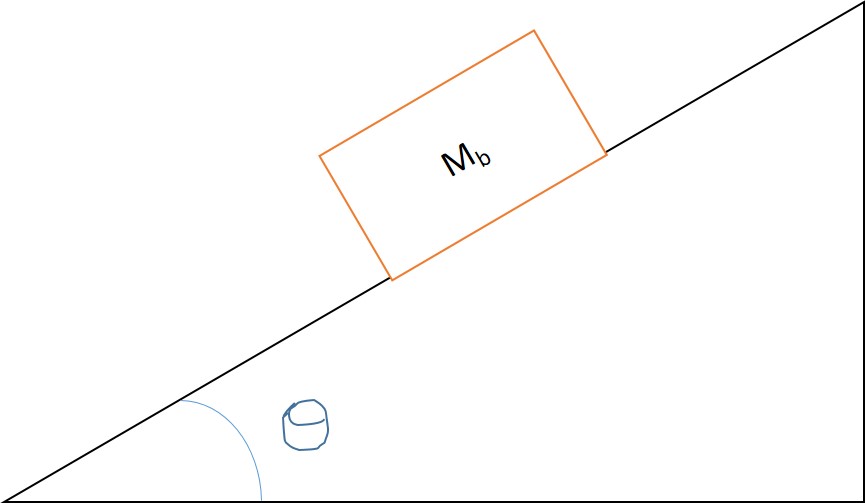Static Friction: Difference between revisions
| Line 33: | Line 33: | ||
[[File:Mearathu31.jpg]] | [[File:Mearathu31.jpg]] | ||
Solution: | |||
To solve the problem the first step required is to identify the free body diagram: | |||
[File:Mearathu32.jpg]] | |||
The next step is to calculate the ‘’’Y’’’ component of the ‘’’Fgrav ’’’. That will be equal to the ‘’’FN ‘’’. | |||
===Difficult=== | ===Difficult=== | ||
Revision as of 00:29, 6 December 2015
claimed by: mearathu3 Short Description of Topic
The Main Idea
Friction is the resistance to motion between two objects. It is proportional to the force that pushes the two surfaces together and the roughness of the surface. Static friction is the friction between two objects that are not moving. Static friction between the two objects will increase to oppose motion until it reaches a certain point in which the objects move. This point of motion is defined by the coefficient of static friction which is generally greater than the coefficient of kinetic friction.
A Mathematical Model
Friction is defined by the formula:
- [math]\displaystyle{ {F}_{friction} = {μ}{F}_{normal} }[/math]
Where μ is the coefficient of friction between the two objects and F_normal is the normal force between the two surfaces.
Static friction is the maximum force just before the two objects enter into motion and it is related to the coefficient of static friction. It is defined as follows:
- [math]\displaystyle{ {F}_{max,f} = {μ}_{static}{F}_{normal} }[/math]
Where μ_static is the coefficient of static friction and F_normal is the normal force between the two surfaces. If the force exerted on the objects exceeds the F_max the objects start to move.
A Computational Model
How do we visualize or predict using this topic. Consider embedding some vpython code here Teach hands-on with GlowScript
Examples
Be sure to show all steps in your solution and include diagrams whenever possible
Simple
Middling
There is a box resting on an incline plane with a mass of 5 kg. The coefficient of static friction between the box and the ramp is μ = 0.26. The box isn’t moving, what is the friction force?
Solution:
To solve the problem the first step required is to identify the free body diagram:
[File:Mearathu32.jpg]]
The next step is to calculate the ‘’’Y’’’ component of the ‘’’Fgrav ’’’. That will be equal to the ‘’’FN ‘’’.
Difficult
Connectedness
- How is this topic connected to something that you are interested in?
- How is it connected to your major?
- Is there an interesting industrial application?
History
Put this idea in historical context. Give the reader the Who, What, When, Where, and Why.
See also
Are there related topics or categories in this wiki resource for the curious reader to explore? How does this topic fit into that context?
Further reading
Books, Articles or other print media on this topic
External links
References
This section contains the the references you used while writing this page
